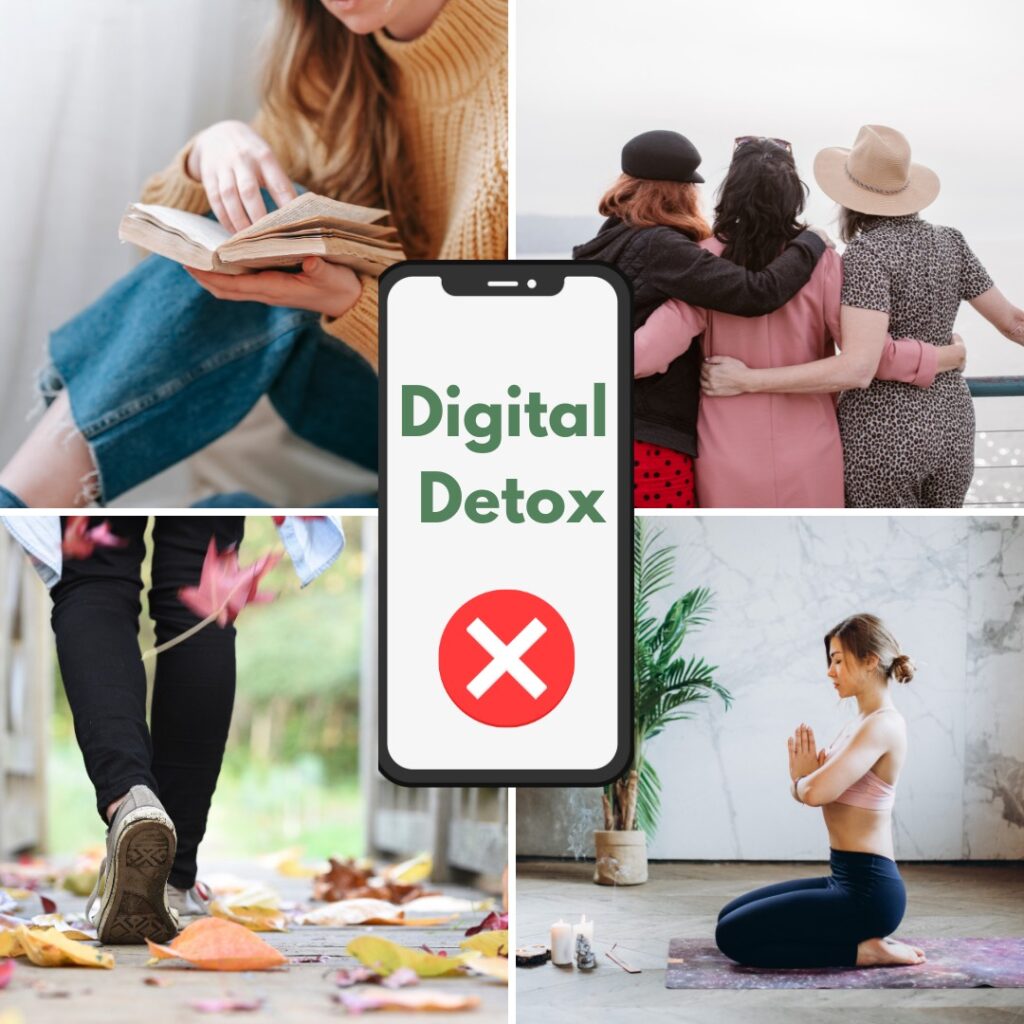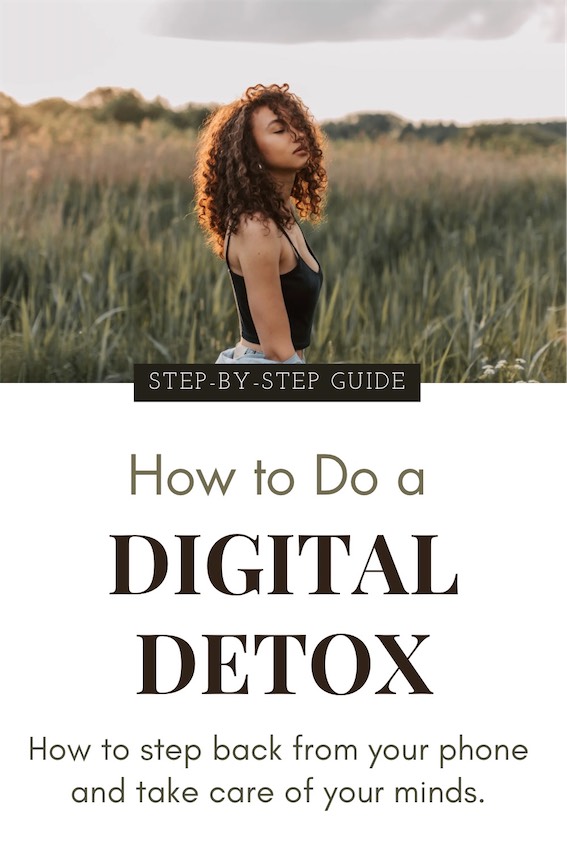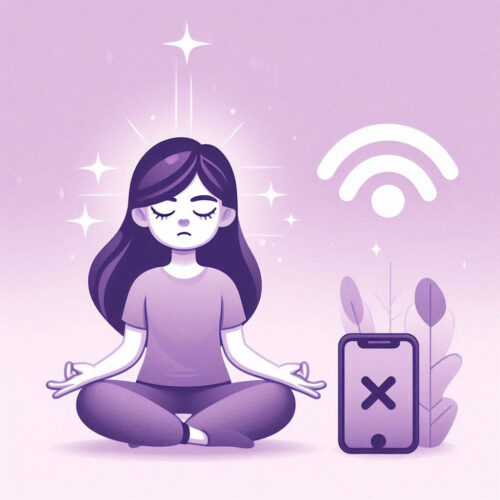Last updated on at 05:50 am
In our fast-paced digital age, it’s easy to feel overwhelmed by the constant buzz of notifications and the never-ending stream of information. If you find yourself yearning for a mental reset, it might be time for a digital detox. In this guide, we’ll walk you through practical tips and strategies to help you unplug, recharge, and regain control over your screen time.
Understanding the Digital Detox: What It Means
Before diving into the step-by-step guide, let’s clarify what a digital detox is and why it matters. A digital detox involves consciously disconnecting from electronic devices to reduce stress, improve focus, and foster meaningful connections. It’s about creating a balance between the benefits of technology and the need for mental well-being.

Stages of a Digital Detox
Now, let’s look at each step to make this break easy and enjoyable, exploring not just the ‘how’ but the ‘why’ behind each stage.
Step 1: Assess Your Digital Dependence
Begin by evaluating your current relationship with technology. Take note of how much time you spend on screens each day and reflect on how it makes you feel. Are you constantly checking your phone, even in social settings? Acknowledging your habits is the first step toward change.
Step 2: Set Clear Goals
Define your digital detox goals. Whether it’s reducing screen time, curbing social media use, or establishing tech-free zones, having clear objectives will guide your detox journey. Be specific about what success looks like for you.
Step 3: Create a Realistic Plan
Going cold turkey on technology might not be realistic for everyone. Craft a gradual and achievable plan. Start small by designating specific times of the day as screen-free or committing to a device-free hour before bedtime.
Step 4: Establish Tech-Free Zones
Identify areas in your life where technology doesn’t belong. The bedroom is a common recommendation; banishing screens from this space promotes better sleep and enhances overall well-being. Consider extending this to meal times and social gatherings.
Step 5: Embrace Analog Alternatives
Replace digital activities with analog alternatives. Rediscover the joy of reading a physical book, engaging in face-to-face conversations, or exploring outdoor activities. The key is to find activities that bring fulfillment without the constant presence of screens.
Related Read: Social Media Detox Quotes That Will Change Your Life
Step 6: Turn Off Notifications
Constant pings and beeps from notifications can be a major source of distraction. Take control by turning off non-essential notifications. This small adjustment can significantly reduce the urge to check your devices incessantly.
Step 7: Plan Digital Sabbaticals
Designate specific days or weekends for complete digital sabbaticals. Use this time to focus on hobbies, spend quality time with loved ones, or simply enjoy moments of solitude without the constant hum of technology.
Step 8: Practice Mindfulness
Incorporate mindfulness practices into your daily routine. Techniques such as meditation and deep breathing can help you stay present and reduce the allure of digital distractions.
Step 9: Reflect and Adjust
Regularly assess your progress and make adjustments to your digital detox plan as needed. Celebrate your successes, no matter how small, and be compassionate with yourself if you encounter setbacks.
Step 10: Share Your Journey
Consider sharing your digital detox journey with friends or on social media. Your experience may inspire others to embark on their own technology detox, creating a supportive community of like-minded individuals.
How long should you do a digital detox?
The ideal length of time for a digital detox can vary depending on individual preferences, lifestyle, and goals, and what feels achievable for you. There is no one-size-fits-all answer, as what works for one person may not be suitable for another. Here are a few considerations to help you determine the best length of time for your digital detox:
- Weekend Detox (2-3 Days): A weekend digital detox is a popular choice as it allows for a meaningful break without significantly disrupting work or social obligations. This duration provides enough time to unwind and experience the benefits of reduced screen time.
- Weeklong Detox (5-7 Days): A more extended digital detox, lasting a week or more, can offer a deeper and more immersive experience. This duration allows for a more comprehensive break from digital distractions, providing time for self-reflection, relaxation, and engagement in non-digital activities.
- 30-Day Challenge: Some individuals opt for a month-long digital detox, which allows for a more substantial reset of habits and a deeper exploration of life without constant digital engagement. This duration can be particularly effective for breaking ingrained habits and establishing new, healthier routines.
- Incremental Approach: For those new to digital detoxing, starting with shorter periods and gradually increasing the duration might be a more manageable approach. This allows individuals to assess their comfort level and make adjustments based on their experiences.
- Ongoing Lifestyle Changes: Instead of a fixed duration, some people choose to implement ongoing lifestyle changes, incorporating regular, shorter breaks from digital devices into their routines. For example, designating certain evenings or weekends as screen-free time.
Experiment with different durations, and be open to adjusting based on your experiences. The key is to find a balance that enhances your well-being without causing undue stress or disruption to your daily life.
A Little Break for a Happier You
In conclusion, a successful digital detox is all about finding a balance that works for you. By following these steps and incorporating them into your lifestyle, you can unplug, recharge, and cultivate a healthier relationship with technology. Remember, the goal is not to eliminate technology entirely, but to use it mindfully, enhancing rather than detracting from your overall well-being.
Happy detoxing!
📌 Pin to Save 📌

Follow me on:





Leave a Reply